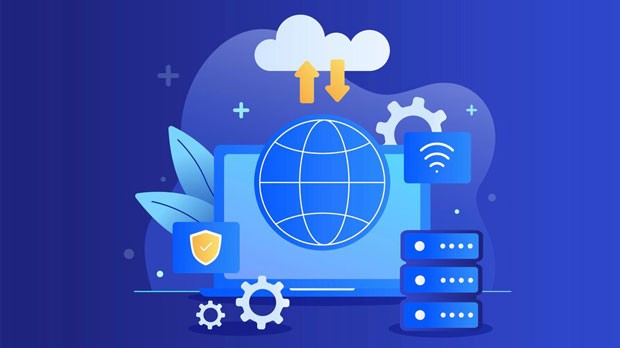In the modern business landscape, enterprises are increasingly relying on technology to enhance operational efficiency and ensure seamless service delivery. One of the most vital aspects of optimizing business operations is ensuring the reliability and scalability of IT infrastructure. PYPROXY’s data center servers provide enterprise applications with robust solutions to meet these needs. By utilizing PYPROXY's state-of-the-art technology, businesses can ensure maximum uptime, optimize data handling, and streamline processes to increase overall efficiency. This article will explore how PYPROXY’s data center servers empower enterprise applications and provide actionable insights on how organizations can leverage them to boost performance. Understanding PYPROXY’s Data Center Servers and Their Role in Enterprise ApplicationsPYPROXY offers high-performance, scalable data center servers designed to meet the needs of modern enterprise applications. These servers are built with reliability and speed in mind, offering businesses the ability to handle large volumes of data, process complex computations, and maintain a consistent uptime. In enterprise environments, efficiency is not just about performance, but also about reducing downtime and ensuring seamless data access and processing. PYPROXY's servers are engineered to tackle these challenges head-on.These data center servers are typically equipped with cutting-edge hardware, including powerful CPUs, high-speed memory, and optimized storage systems, all of which are designed to support demanding applications. Moreover, PYPROXY ensures these servers are placed in highly secure, temperature-controlled environments, maximizing their reliability and lifespan. As such, these servers are perfect for enterprises that rely on continuous, real-time data access and large-scale processing.Enhancing Application Performance Through Improved InfrastructureOne of the core advantages of utilizing PYPROXY’s data center servers is the improvement in application performance. For enterprises running mission-critical applications that require high availability, performance, and speed, PYPROXY provides the necessary infrastructure to ensure optimal functionality. By hosting applications on reliable and high-performance servers, businesses can experience reduced latency, faster data access, and better resource management.These servers are designed to efficiently handle high traffic loads, ensuring that applications can run smoothly even during peak usage times. Additionally, PYPROXY’s infrastructure supports load balancing and redundancy, further increasing the performance of enterprise applications. By distributing workloads across multiple servers, businesses can avoid bottlenecks and ensure that applications remain responsive and operational, even when faced with sudden spikes in demand.Maximizing Uptime with PYPROXY’s Redundancy and Disaster Recovery SolutionsFor businesses that rely on continuous operations, minimizing downtime is essential. PYPROXY’s data center servers come equipped with advanced redundancy features to ensure that critical enterprise applications remain operational at all times. This includes redundant power supplies, network connections, and storage systems that are designed to minimize the risk of system failures.In the event of an unexpected outage, PYPROXY’s disaster recovery solutions are designed to quickly restore services, ensuring minimal impact on business operations. With this built-in redundancy and disaster recovery capabilities, businesses can have peace of mind knowing that their applications will continue to run smoothly, even in the event of technical failures.Scalability and Flexibility for Growing EnterprisesAs enterprises expand, their IT infrastructure needs to evolve to keep up with growing demands. One of the biggest challenges for businesses is ensuring that their servers can scale in response to increasing data loads and application requirements. PYPROXY’s data center servers offer scalability, allowing businesses to expand their server resources as needed.Whether an enterprise is growing its customer base, adding new applications, or increasing the volume of data it processes, PYPROXY’s flexible infrastructure makes it easier to scale operations. This scalability is particularly beneficial for businesses that experience fluctuating demands, as they can adjust their server resources in real-time, ensuring they only pay for the resources they need at any given moment.Security and Compliance: Safeguarding Enterprise DataSecurity is a top priority for any enterprise, and PYPROXY’s data center servers are equipped with robust security measures to safeguard sensitive data. From physical security protocols, such as biometric access control and 24/7 surveillance, to digital security features like firewalls, encryption, and intrusion detection systems, PYPROXY ensures that enterprise data is protected from cyber threats.Additionally, PYPROXY’s data centers are compliant with various industry standards and regulations, making them an excellent choice for businesses that must meet strict regulatory requirements, such as GDPR or HIPAA. The combination of robust physical and digital security features provides enterprises with the peace of mind that their data is being handled securely and responsibly.Cost-Effectiveness: Optimizing IT BudgetsManaging IT costs can be a challenge for many enterprises, especially as their infrastructure grows. By utilizing PYPROXY’s data center servers, businesses can optimize their IT budgets by taking advantage of the cost efficiencies associated with cloud-based infrastructure. Instead of investing heavily in on-premises hardware, businesses can leverage PYPROXY’s managed services and only pay for the server resources they need.Furthermore, PYPROXY’s servers are designed for energy efficiency, helping businesses reduce their carbon footprint and lower operational costs. This not only benefits the environment but also results in cost savings for enterprises in the long term.Conclusion: Empowering Enterprises to Achieve Operational ExcellenceIn today’s fast-paced business environment, enterprises need reliable, scalable, and secure IT infrastructure to stay competitive. By leveraging PYPROXY’s data center servers, businesses can significantly enhance the performance of their enterprise applications while ensuring security, scalability, and uptime. With the ability to improve application performance, reduce downtime, scale efficiently, and optimize IT budgets, PYPROXY offers a comprehensive solution for enterprises looking to boost operational efficiency and maintain a competitive edge.Through the integration of PYPROXY’s advanced technology, businesses can drive better customer experiences, streamline their operations, and set the foundation for future growth. By investing in reliable infrastructure, companies can future-proof their operations and focus on achieving their long-term business goals.
Nov 12, 2025



































































